Often teaching about Cambodia focuses on two key historical events: the Kingdom of Angkor of the ninth to fifteenth centuries and the Khmer Rouge Genocide of 1975–1979. For students in my
undergraduate classrooms, when I ask what they know about Cambodia, if they have any baseline knowledge at all, discussion of the country is generally synonymous with Pol Pot and the genocidal Khmer Rouge regime. Many students are exposed to this history through books like First They Killed My Father which they were assigned to read or watch in high school.1 This horrific event, where one in four Cambodians are estimated to have perished either through murder, starvation, or disease, is significant recent history. However, instructional content on Cambodia can and should go further. In this essay I offer a rationale and strategies for enriching the exploration of contemporary Cambodia through the films of one innovative Cambodian film studio, Anti-Archive.
Focusing on the Socio-Economic Context of Today and the Aspirations of Young People.
It is said that the post-Khmer Rouge generation (children born after 1979) are the future of a new Cambodia.2 For this reason, when students learn about Cambodia, they should also learn about what it means to be a member of this generation. Over half of the population was born after 1979 and are growing up in a country that has been rapidly developing and changing during their lifetimes. Cambodia remains one of Asia’s poorest countries, with much of the population relying on subsistence farming and low-wage employment in the garment industry despite some improvements in 2021 by the textile industry.3 The economy is developing rapidly, with young people very much connected to the wider world through social media, mobile phones, and the internet.4 Although Cambodia is still one of the poorest countries in Asia, its economy has been growing and slowly diversifying. The World Bank recently recategorized Cambodia from being a
low-income to a low middle-income country.5
This dynamic and technologically savvy young population is the driving force shaping the country now and into the future.6 Cambodia’s government has become increasingly repressive, with former Khmer Rouge member turned Prime Minister Hun Sen leading the country since 1985 and showing no signs of being interested in relinquishing power. Despite this, young people are clamoring for change.7 Historically Hun Sen’s administration has tolerated periods of relative freedom and political dissent but has used crackdowns, coups, and the courts to squash dissent when serious challenges arise against the Cambodian People’s Party (CPP). In 2017 in the lead-up to local elections, the CPP cracked down against the opposition Cambodia National Rescue Party (CNRP) leading to the banning and dissolution of the CNRP by the Cambodian Supreme Court. Elections in 2018 solidified Cambodia’s ruling regime as a one-party state (for now).8
Hun Sen’s regime is building closer relationships with China as it seeks to forge an economic path that will offer opportunities for greater growth and development. Cambodia’s economic policies very much reflect navigation between economic liberalization of socialist economies, and the great power struggles between the United States and the People’s Republic of China as each seeks to gain influence in the country. The experiences of the post-Khmer Rouge generation as they respond to the forces of state repression, large-scale poverty, and striving for greater economic opportunities, are key to understanding what is taking place there now. Considering the experiences and challenges that this new generation faces through independent film is a powerful tool to help students in the US gain a deeper understanding of these topics.
Why film? Why Anti-Archive?
As other teaching resource pieces in this journal have noted, teaching with film is an impactful way to get students engaged in what they are learning.9 Anti-Archive films tell stories of and by young people about what it is like now to be living and dreaming in Cambodia. This studio’s films also employ young Cambodians who are aspiring filmmakers. Historically Cambodians interested in careers in film making had to leave the country to gain experience in the industry.10 Utilizing films like those of Anti-Archive accomplishes two important goals in the classroom. These films 1) expose students to a broad array of perspectives on what constitutes contemporary Cambodia or contemporary Cambodian identity and 2) broaden the scope of Cambodian voices showcasing Cambodian experiences.
Cambodia’s political and societal changes are reflected in its history of film production. Before the Khmer Rouge takeover in 1979, Cambodia had a thriving film industry. The years immediately following independence from French colonial rule in 1953 are often referred to as the golden age of Cambodian cinema where film production flourished, and theaters opened across the country. Even King Norodom Sihanouk tried his hand at acting and producing. Once the Khmer Rouge regime came to power, however, the film industry was utterly wiped out.11 At this time Cambodia’s economy was nationalized, deindustrialized, and private enterprise was destroyed completely. The film industry suffered alongside Cambodian society and was almost entirely gutted. People who had made careers in the film industry were hunted down and killed.
Today the best-known Cambodian filmmaker may be Director Rithy Panh and his documentary film making known as the “cinema of witness”.12 Panh’s “cinema of witness” is a kind of testimonial filmmaking and storytelling that takes the restoration and documentation of memory as its central tenant and moral imperative.13 A key goal of his films is to validate the experiences of survivors of the Khmer Rouge and document the ongoing need for justice.14 Panh has been active in the development of Cambodia’s film industry including the founding and support of the Bophana Audiovisual Resource Center. Founded in 2006 by Panh and fellow filmmaker Ieu Pannakar, the Center is named after a young woman who, along with her husband, were tortured and executed at the infamous Security Prison 21, now the Tuol Sleng Genocide Museum. The Bophana Center is one of the most important archival institutions in Cambodia and serves as a production
company and incubator for emerging filmmakers and their works.15 As journalist Jackson Brook detailed in the winter 2021 EAA article “The Act of Constructing Memory at Cambodia’s Bophana Center,” locally based organizations like the Bophana Center offer excellent primary source materials for students to investigate that showcase testimony of Khmer Rouge survivors.16 The Center also offers opportunities for the average Cambodian to tell their story and to gain skills in documentary storytelling and film making.
The imaginative creative and documentary films of Anti-Archive also do this. However, in Anti-Archive’s work, the focus of films is typically the rapidly changing present rather than the past. Anti-Archive was established in 2014 and produces and co-produces fiction and documentary films by an emerging, new generation of Cambodian filmmakers. As they state, “the name Anti-Archive invites one to rethink the relationship of films and filmmakers with the past and history”. Today these relatively few individuals represent the face of a movement that one of them, Davy Chou, has labeled “Neo-Documentarism.”
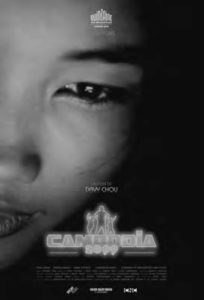
A key piece of what makes Anti-Archive’s films so educatively valuable is the use of the surrounding environment of city and rural landscapes. These spaces are rife with change. Even when film content is not explicitly about how quickly the country is changing, the footage is almost documentary-like, with ample use of amateur actors and impromptu shooting. This real-time footage makes these films testaments to a changing physical and social landscape. Close-up shots of development projects, motorbike rides, construction, people hanging out, and traffic all reflect a place changing rapidly every day. Special Economic Zones, places where industries are granted preferential laws, that have been in place in Cambodia since 2006, make appearances as scenes for filming. Mobile phone penetration is everywhere, as are the contrasts of a technologically savvy and cosmopolitan young population who also face sustained, and difficult-to-shake poverty.
Also clear through these films is the joy, power, and sense of possibility that the characters radiate. They are connected and supported by their friends, they are looking for opportunities, they are falling in love, and a sense of hope and agency permeate the stories even when facing unfair treatment by the government, lost love, and the need to move for greater economic opportunity. The characters in the films, just like young Cambodians now, are caught in a period of intense and rapid change.
Phnom Penh is one of Asia’s fastest-growing cities and the country rapidly urbanizing. This high-speed development is leading to much of the country’s existing architecture being torn down or gutted. As these films depict, because of this development, long-time residents are evicted and often paid paltry sums so that international investors can move in. At the same time, rural residents are being pushed to the city to find work. Poorer people are pushed to the margins of the city and prime real estate sold to the wealthy.
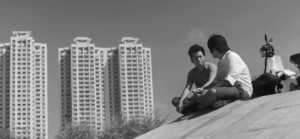
During the 2021–2022 academic year, I showed five Anti-Archive films (three short films, one feature documentary, and one feature film) in a class on contemporary Southeast Asia. The short films worked well to screen within a regular class meeting, and I assigned the longer films for students to watch outside of class time. Below I discuss three of these films and their value in the classroom for teaching about contemporary life in the country: Cambodia 2099, Last Night I Saw You Smiling, and Sunrise in My Mind.17
Set in the new development of Koh Pich (Diamond Island), Cambodia 2099 (21 minutes) follows the story of two young men who are mulling over their dreams both literally about what they dreamt of the night before and more abstractly about what they want their future to look like. Themes of mobility and socio-economic stratification shine throughout the story reflecting how Cambodia’s development and modernization are deeply interwoven with labor exploitation and the limited mobility of many young people. This results in migration patterns that force unskilled and low-skilled workers to leave their homes to find work elsewhere, as well as to relocate across borders for work in construction, manufacturing, care industries, and hospitality. The desire to gain access to a future that is different than present opportunities is visible through the diverging but parallel paths of the two main protagonists—one who moves to California and one who
travels to the future. The film also provides some political commentary as characters discuss the upcoming election, showcasing their disenfranchisement with authoritarian leadership not through direct criticism, but instead through a conversation about how the candidate with the platform of offering free Wi-Fi to everyone has their vote.
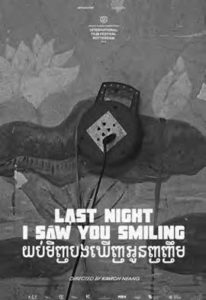
In Last Night I Saw You Smiling (78 minutes), director and videographer Kavich Neang follows the removal of his own family and neighbors from the building he grew up in (the White Building) that was torn down in 2017. This apartment building was built in a period of architectural innovation and grandeur of Cambodia in the 1960s during the golden era between the end of the French occupation and the takeover by the Khmer Rouge. Beginning in 1963 the apartment complex was initially home to a community of artists and then abandoned when city residents were forced out to the countryside during 1975–1979. After the Khmer Rouge fell and Cambodians were allowed to return to Phnom Penh, artists like Kavich Neang’s parents moved back into the building. Over the years the building slowly fell into disrepair and became a place where many low-income residents lived.18
The history of the white building intersects with the history of arts development in Cambodia. It also reflects the backdrop of widening economic gaps that are exacerbated by foreign investment from China, Japan, and other countries looking to profit off the high growth rate of the Cambodian economy. This film showcases how many residents of the building had spent most of their lives in the compound, and by being forced to move are losing not only their memories and the ability to live near friends, but also to keep their right to live in downtown Phnom Penh where costs have become very high. The film starkly shows the challenges the residents faced getting clear communication about compensation they would receive for moving, and their struggles in the lead-up to the demolition when they had to move all their personal belongings. This film is also the initial project that Kavich Neang turned into a feature film in 2022 called the White Building, which follows a fictional twenty-year-old Samnang and two of his friends who all live in the tenement as it is undergoing its destruction.
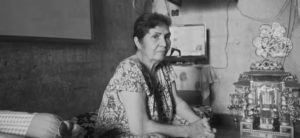
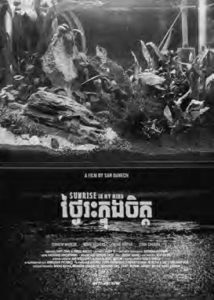
Sunrise in my mind (13 minutes) by San Danech’s explores a love story between a young woman working as a beautician who falls for a motorbike delivery driver who spends his evenings driving Phnom Penh’s streets. The film centers around conversations about love and romance between the beauticians and their female customers. It takes place almost entirely in the salon, capturing not only the feelings and perspectives of the characters on love, but also beautifully depicts working environment of the small beauty salon. Through this film, students can glimpse a piece of life in Phnom Penh and dig into the analysis of gender roles, relationships, and aspirations of the characters.
Pedagogical Applications
Using films like those of Anti-Archive expands the type kind of materials students engage with. Stories of young people navigating a changing Cambodia assist students with reconciling the disparity between stories of genocide and cultural destruction and the present infrastructural and economic growth transformation and its corresponding impacts on their peers in Cambodia. Using these films requires front loading important content and film analysis skills with students. These independent films don’t follow narrative archetypes that are generally familiar to students or that lend themselves to being easily understood by most American undergraduate or high school students.
To help students navigate discomfort viewing films that force them to analyze both unfamiliar narrative structures and reading subtitles at the same time (unless they speak Khmer),19 as well as having limited understanding of the political and social backdrop present in the films, I generally begin with a short explanation about the films and then have students research different key aspects of social, economic, and political issues that surface in the stories. As an example, when watching Cambodia 2099 I have students research the Diamond Island development, Cambodian labor migration, Cambodia’s mobile phone and internet infrastructure development, and recent political elections. I also have students do preliminary research on Phnom Penh using Google Map and Google Earth, so they are loosely familiar with key locations in the films and the layout of the city.
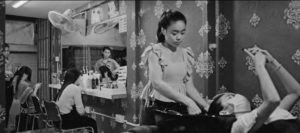
By including these films in coursework in the United States, the films of a small production company like Anti-Archive and the artists they support gain a broader audience. This can help demonstrate to students that valuable source material does not only come from big name production companies or big budgets for film productions or scholarly articles. It also comes from the arts and from art produced by local people.
For educators who are interested in using these films, Anti-Archive classroom educational licenses for the films described in this article are available for US $40 per short film for Cambodia 2099 and Sunrise on My Mind. The documentary Last Night I Saw You Smiling is available for US $75. All three films are available for US $120 as a set. If you are interested in previewing or purchasing these films, please contact Anti-Archive directly (education@antiarchive.com).
1. Loung Ung’s memoir First They Killed My Father: A Daughter of Cambodia Remembers (New York: HarperCollins, 2000) was featured in the film First They Killed My Father, directed by Angelina Jolie, in 2017.
2. Burcu Munyas, “Genocide in the Minds of Cambodian Youth: Transmitting (hi)stories of Genocide to Second and Third Generations in Cambodia.,” Journal of Genocide research 10, no. 3 (2008): 413–439.
3. Shuan Turton, “Rising Exports Mask Skills Gap in Cambodia’s Garment Industry,” Nikkei Asia, January 21, 2022, https://tinyurl.com/33fuzf9z.
4. Dae-oup Chang, “Transnational Labour Regimes and Neo-Liberal Development in Cambodia,” Journal of Contemporary Asia 52, no. 1 (2022): 45–70, https://tinyurl.com/mr2k9bt5.
5.World Bank, “World Bank in Cambodia,” accessed July 22, 2022, https://tinyurl.com/yfxns693
6. Mun Vong and Kimhean Hok, “Facebooking,” South East Asia Research 26. no. 3 (2018): 219–234.
7. Duncan McCargo, “Cambodia in 2013: (No) Country for Old Men?,” Asian Survey 54, no. 1 (2014): 71–77.
8. Sebastian Stranglo, “Cambodia Becomes the World’s Newest One-Party State,” Foreign Policy, accessed July 22, 2022, https://tinyurl.com/bdzx8fep.
9. Benjamin Harris, “Teaching Cambodian Genocide Through Film,” Education About Asia 26, no. 2 (2021): 12–17; Abir Bazaz, “Teaching Kashmir through Documentary Films,” Education About Asia 26, no. 2 (2021): 58–63.
10. “About,” Anti Archive, July 23, 2022, https://www.antiarchive.com/.
11. In 2013, French-Cambodian Filmmaker Davy Chou released his documentary Golden Slumbers tracing the development and destruction of the Cambodian film industry in the 1960s and 1970s. See https://tinyurl.com/2p86zxx6.
12. Leslie Barnes and Joseph Mai, The Cinema of Rithy Panh: Everything Has a Soul (Ithaca, NY: Rutgers University Press, 2021).
13. Rithy Panh, “Cambodia: A Wound That Will Not Heal,” The Unesco Courier 52, no. 12 (1999): 30–32.
14. Maria Elander, “Testimonial Practices in Rithy Panh’s S21: The Khmer Rouge Killing Machine,” Crime, Media, Culture, November 2021, https://tinyurl.com/2s384y3z.
15. Jackson Brook, “The Act of Constructing Memory at Cambodia’s Bophana Center,” Education About Asia 26, no. 3 (2021): 50–55.
16. Brook, “The Act of Constructing Memory at Cambodia’s Bophana Center.”
17. Cambodia 2099, directed by Davy Chou (Phnom Penh: Anti-Archive, 2014), short film; Sunrise in My Mind, directed by Danech Sun (Phnom Penh: Anti-Archive, 2020), short film; Last Night I Saw You Smiling, directed by Kavich Neang (Phnom Penh: Anti-Archive, 2015), documentary.
18. Brianne Cohen, “Slow Protest in the Occupation of Cambodia’s White Building,” Representations 148, no. 1 (2019): 136–154.
19. “Cambodians in the US Fact Sheet,” Pew Research Center, accessed July 23, 2022, https://tinyurl.com/mssz6xvc.

